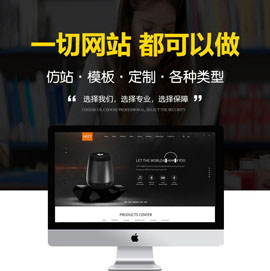怎么在iOS中实现一个列表折叠效果-创新互联
这篇文章给大家介绍怎么在iOS中实现一个列表折叠效果,内容非常详细,感兴趣的小伙伴们可以参考借鉴,希望对大家能有所帮助。

实现列表折叠效果其实比较简单,点击列表头部的时候,把返回列表行数设为 0,就是收起列表;再次点击列表头部,显示列表的行数,就展开了列表。
#import "TableDownUpVC.h"
#import "TableViewCell_TableSelect.h"
@interface TableDownUpVC ()
{
NSMutableDictionary *dicSelet;
NSArray *arrData;
NSMutableArray *arrStatus;
NSInteger selectFlag;
NSMutableDictionary *dictShow;
}
@property (nonatomic, strong) UIImageView *imgArror;
@end
@implementation TableDownUpVC
- (void)viewDidLoad {
[super viewDidLoad];
self.tableView.autoresizingMask = UIViewAutoresizingFlexibleHeight;
self.title = @"列表折叠效果";
dictShow = [[NSMutableDictionary alloc] init];
arrStatus = [[NSMutableArray alloc] init];
NSDictionary *dict0 = @{@"section":@"头部0",
@"content":@[@{@"title":@"Section0",@"subTitle":@"Row0",@"avator":@"user_default_blue"},
@{@"title":@"Section0",@"subTitle":@"Row1",@"avator":@"user_default_blue"},
@{@"title":@"Section0",@"subTitle":@"Row2",@"avator":@"user_default_blue"}]};
NSDictionary *dict1 = @{@"section":@"头部1",
@"content":@[@{@"title":@"Section1",@"subTitle":@"Row0",@"avator":@"user_default_blue"},
@{@"title":@"Section1",@"subTitle":@"Row1",@"avator":@"user_default_blue"},
@{@"title":@"Section1",@"subTitle":@"Row2",@"avator":@"user_default_blue"}]};
NSDictionary *dict2 = @{@"section":@"头部2",
@"content":@[@{@"title":@"Section2",@"subTitle":@"Row0",@"avator":@"user_default_blue"},
@{@"title":@"Section2",@"subTitle":@"Row1",@"avator":@"user_default_blue"},
@{@"title":@"Section2",@"subTitle":@"Row2",@"avator":@"user_default_blue"}]};
arrData = @[dict0,dict1,dict2];
dicSelet = [[NSMutableDictionary alloc] init];
//初始化选中状态(默认都不选择)
for (NSInteger i=0; i<arrData.count; i++) {
NSArray *content = arrData[i][@"content"];
NSMutableDictionary *dict = [[NSMutableDictionary alloc] init];
for (NSInteger j=0; j<content.count; j++) {
[dict setObject:@"0" forKey:STR_NUM(j)];
}
[arrStatus addObject:dict];
}
//初始化列表头部折叠状态
for (NSInteger i=0; i<arrData.count; i++) {
[dictShow setObject:@"0" forKey:STR_NUM(i)];
}
}
#pragma mark - TableViewDataSource,UITableViewDelegate 扩展
- (NSInteger)numberOfSectionsInTableView:(UITableView *)tableView
{
return arrData.count;
}
- (NSInteger)tableViewEx:(UITableView *)tableView numberOfRowsInSection:(NSInteger)section
{
NSString *isShow = dictShow[STR_NUM(section)];
if ([isShow isEqualToString:@"0"]) {
NSArray *arr = arrData[section][@"content"];
return arr.count;
} else {
return 0;
}
}
- (CGFloat)tableViewEx:(UITableView *)tableView heightForRowAtIndexPath:(NSIndexPath *)indexPath
{
return 60;
}
- (UITableViewCell *)tableViewEx:(UITableView *)tableView cellForRowAtIndexPath:(NSIndexPath *)indexPath
{
static NSString * identifier = @"cellIdentifier";
TableViewCell_TableSelect *cell = [tableView dequeueReusableCellWithIdentifier:identifier];
cell.selectionStyle = UITableViewCellSelectionStyleNone;
if (cell == nil) {
cell = [[TableViewCell_TableSelect alloc]initWithStyle:UITableViewCellStyleSubtitle reuseIdentifier:identifier];
}
[cell setDictInfo:arrData[indexPath.section][@"content"][indexPath.row]];
[cell setAccessoryImage:arrStatus[indexPath.section][STR_NUM(indexPath.row)]];
return cell;
}
- (void)tableViewEx:(UITableView *)tableView didSelectRowAtIndexPath:(NSIndexPath *)indexPath
{
NSMutableDictionary *dict = arrStatus[indexPath.section];
NSString *str = dict[STR_NUM(indexPath.row)];
if ([str isEqualToString:@"0"]) {
[dict setValue:@"1" forKey:STR_NUM(indexPath.row)];
} else {
[dict setValue:@"0" forKey:STR_NUM(indexPath.row)];
}
[self.tableView reloadData];
}
- (CGFloat)tableView:(UITableView *)tableView heightForHeaderInSection:(NSInteger)section
{
return 50;
}
- (CGFloat)tableView:(UITableView *)tableView heightForFooterInSection:(NSInteger)section
{
return 10;
}
- (UIView *)tableView:(UITableView *)tableView viewForHeaderInSection:(NSInteger)section
{
UIView *headerView = [UICommonCtrl commonViewWithFrame:CGRectMake(0, 0, SCREEN_WIDTH, 50) color:kColor_White];
UILabel *title = [UICommonCtrl commonLabelWithFrame:CGRectMake(10, 15, 200, 20)
text:arrData[section][@"section"]
color:kColor_Black
font:kFont_Large
textAlignment:NSTextAlignmentLeft];
[headerView addSubview:title];
_imgArror = [UICommonCtrl commonImageViewWithFrame:CGRectMake(SCREEN_WIDTH-20, 22.5, 10, 5) image:nil];
[headerView addSubview:_imgArror];
NSString *str = [dictShow objectForKey:STR_NUM(section)];
if ([str isEqualToString:@"0"]) {
_imgArror.image = [UIImage imageNamed:@"icon_down"];
} else {
_imgArror.image = [UIImage imageNamed:@"icon_up"];
}
@weakify(self)
UIButton *btn = [UICommonCtrl commonButtonWithFrame:CGRectMake(0, 0, SCREEN_WIDTH, 50)
text:@""
color:kColor_Black
font:kFont_Large
backgroundImage:nil
block:^(UIButton *btn) {
@strongify(self)
NSString *str = [dictShow objectForKey:STR_NUM(section)];
if ([str isEqualToString:@"0"]) {
[dictShow setValue:@"1" forKey:STR_NUM(section)];
} else {
[dictShow setValue:@"0" forKey:STR_NUM(section)];
}
[self refreshSection:section];
}];
[headerView addSubview:btn];
for (NSInteger i=0; i<2; i++) {
UIView *line = [UICommonCtrl commonLineViewWithFrame:CGRectMake(0, (50-LINE_SIZE)*i, SCREEN_WIDTH, LINE_SIZE) color:kColor_Line];
[headerView addSubview:line];
}
return headerView;
}
- (UIView *)tableView:(UITableView *)tableView viewForFooterInSection:(NSInteger)section
{
UIView *footerView = [UICommonCtrl commonViewWithFrame:CGRectMake(0, 0, SCREEN_WIDTH, 10) color:kColor_Background];
return footerView;
}
- (void)refreshSection:(NSInteger)section
{
NSIndexSet *indexSet=[[NSIndexSet alloc]initWithIndex:section];
[self.tableView reloadSections:indexSet withRowAnimation:UITableViewRowAnimationFade];
}
@end关于怎么在iOS中实现一个列表折叠效果就分享到这里了,希望以上内容可以对大家有一定的帮助,可以学到更多知识。如果觉得文章不错,可以把它分享出去让更多的人看到。
另外有需要云服务器可以了解下创新互联建站www.cdcxhl.com,海内外云服务器15元起步,三天无理由+7*72小时售后在线,公司持有idc许可证,提供“云服务器、裸金属服务器、高防服务器、香港服务器、美国服务器、虚拟主机、免备案服务器”等云主机租用服务以及企业上云的综合解决方案,具有“安全稳定、简单易用、服务可用性高、性价比高”等特点与优势,专为企业上云打造定制,能够满足用户丰富、多元化的应用场景需求。
新闻标题:怎么在iOS中实现一个列表折叠效果-创新互联
文章位置:https://www.cdcxhl.com/article4/dccsie.html
成都网站建设公司_创新互联,为您提供响应式网站、云服务器、网站设计公司、定制开发、动态网站、搜索引擎优化
声明:本网站发布的内容(图片、视频和文字)以用户投稿、用户转载内容为主,如果涉及侵权请尽快告知,我们将会在第一时间删除。文章观点不代表本网站立场,如需处理请联系客服。电话:028-86922220;邮箱:631063699@qq.com。内容未经允许不得转载,或转载时需注明来源: 创新互联

- 全网营销型网站助企业决胜未来 2014-04-05
- 网站想要实现全网营销需要做到哪些内容? 2015-12-21
- 中小企业如何进行全网营销 2017-06-04
- 常见的全网营销方式都有什么? 2015-08-30
- 全网营销的优势是什么? 2015-06-23
- 企业该如何做好全网营销推广? 2015-06-11
- 全网营销之seo软文营销作用及技巧! 2016-11-07
- 全网营销推广来帮助你 2023-03-06
- 全网营销可以给企业的发展带来哪些优势? 2016-10-27
- 互联网营销时代全网营销推广是重点 2021-01-27
- 全网营销怎么为企业带来更多潜在客户? 2015-06-22
- 有利于全网营销的网站建设及运营服务体系 2016-11-08